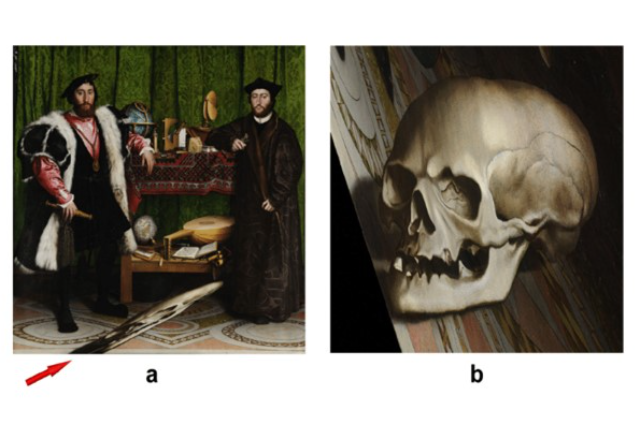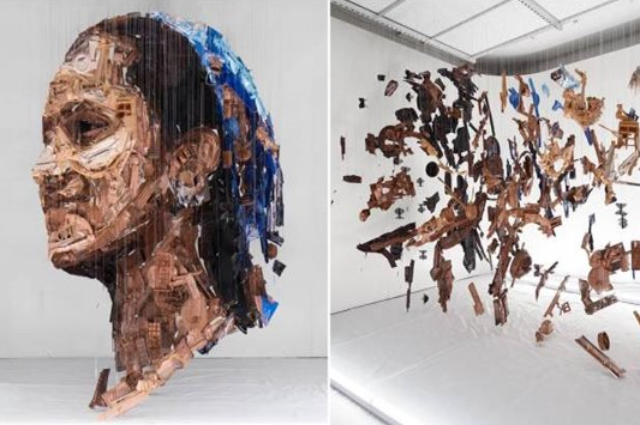
Image by Joshua Nicholas Vanhaltren from Pixabay
I read a short tale this morning. The plot revolved around A married couple who relocated to a new area. The couple was sitting at the kitchen table the next day. The woman spotted her neighbour hanging laundry from their kitchen window on the clothesline. She told her husband that the clothes weren't clean. The woman would repeat this same observation every day for a week. One day as the pair sat down for another supper, the woman watched her neighbour put her clothing out to dry, but this time something was different. she told her spouse, "Someone must have finally taught her how to wash her clothing better." Her husband grinned and added, "Honey, in fact, I got up early this morning and cleaned our window.'' this made me think how important it is to have a good perspective in life. Having an apt perspective can, in fact, change our lives. Situations that we see as messy and ugly can be beautiful and straightforward if viewed from the vantage point.
So, after reading this, when I started searching about how perspective affects our lives, I came across an art form that teaches us how significant a role can perspective play in any situation. Imagine yourself strolling around an art museum, taking in the many colours and shapes of paintings, sculptures, and statues. Suddenly, you come across an unusual artwork. It appears illogical and chaotic when viewed from the front. Someone seems to have attempted to paint a scene, but everything is out of proportion. However, as you begin to walk away, you turn your head for a second and see that the artwork is now apparent. It makes perfect sense from this perspective. This art form is called anamorphosis. Anamorphosis is a clever perspective technique. In this art form, the artist creates a distorted projection requiring the observer to view the piece from a particular vantage point or employ unique instrument to view the artwork. The word anamorphosis is derived from the Greek prefix ana-, which means "again" and morphe, which means "shape" or "form."
The traces of this art are dated long back. The Stone Age cave paintings at Lascaux may have used the anamorphic method as the cave's oblique angles would generally result in distorted forms from a viewer's perspective. Pliny and Tzetzes, two ancient historians, mention a sculpting competition between Alcamenes and Phidias to produce a Minerva figure. The sculptures of Alcamenes and Phidias were both magnificent, but Phidias' possessed monstrous proportions. But after being erected on pillars the decelerated perspective rendered Phidias' Minerva attractive and Alcamenes' hideous look. The first known definite example of perspective anamorphosis is Leonardo's Eye (Leonardo da Vinci, c. 1485) by Leonardo da Vinci. We can also find this anamorphic technique in Hans Holbein's works. His painting The Ambassadors is the most prominent example of anamorphosis. It has a deformed shape that runs diagonally across the bottom of the frame. But when seen at an acute angle, it seems to be a skull.

This art form is broadly divided into two categories – perspective anamorphosis (oblique) and mirror anamorphosis(catoptric). Perspective anamorphosis has been documented since the early Renaissance (15th century). The first examples of mirror anamorphosis in the late Renaissance were constructed (16th century). A conical or cylindrical mirror is put over a drawing or painting to change a flat distorted image into a three-dimensional picture that can be viewed from various angles with mirror anamorphosis. A planar surface surrounds the mirror, and the warped picture is painted. The image comes to life when you distinctively gaze into the mirror. This anamorphosis method allowed the artist to depict cartoons, sensual and lewd scenes, and magic scenarios to a private audience.

Anamorphic motifs have been used in art in a more subtle way, most notably on the ceilings of cathedrals during the Renaissance. More recently, anamorphic pictures were more commonly used as an optical trick or parlour game for home use throughout the 18th and 19th centuries. They've recently been revived for usage in public art initiatives (the Swiss artist Felice Varini did one in Cardiff Bay in March 2007). They're best used as a contemporary reworking of their inherent attractiveness, which is the 'concealment' of an image in plain sight. They've been used as merely decorative street art both here and overseas, with the goal of doing nothing more than attracting people.

We have discovered a new and profitable way of using anamorphosis. We can see it as a means of sneaking advertising onto the playing surface at significant sporting events. Anamorphic art is being used at major cricket, football, or rugby matches in the previous five years precisely because of its capacity to appear three-dimensional while being two-dimensional.

To the viewers, they seem to be hoardings of various brands. They're commonly placed on each side of the goal or painted on the centre circle, where play begins and ends. They appear to be three-dimensional (like an advertisement hoarding). Still, they are a flat anamorphic picture printed onto a two-dimensional mat or sprayed onto the pitch. In this article, two instances have been included. They allow the advertiser to do. The goal is to bring the brand logo onto the television screen as near the action as possible without putting the players at risk. They can only be comprehended from the primary camera position – front-on – and cannot be understood from any other portion of the ground. In the coming times, we will find this art form to be used in many other fields as well.
This art form has been here for more than 150 years now and still developing. And I am sure people will love the idea of seeing anamorphic art from any angle.
